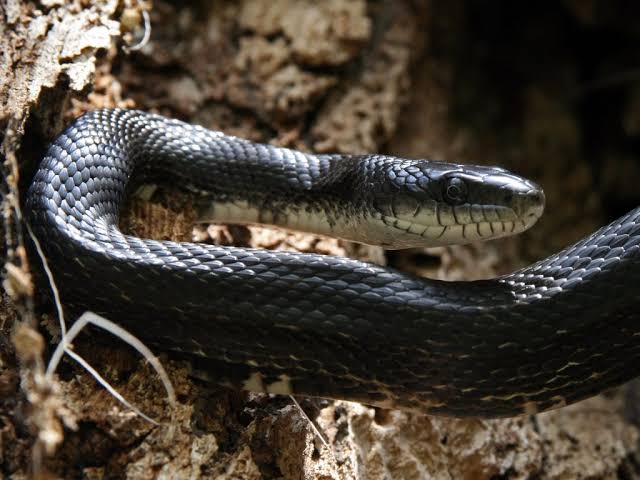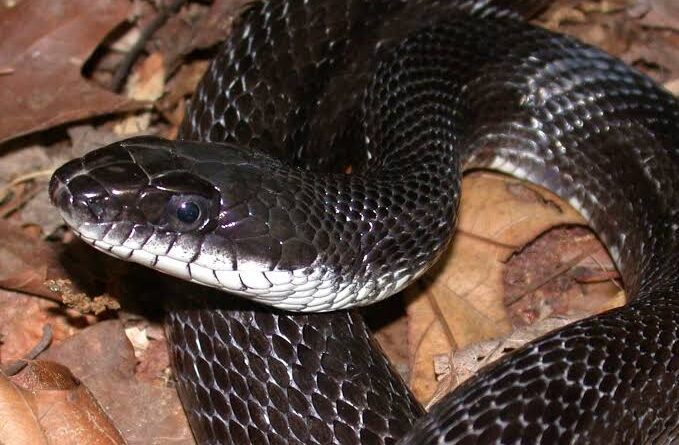The Appearance and Features of Rat Snakes
Rat snake is a snake that lives in different places all around the world. It’s a reptile with a long body covered in scales. Rat snakes come in many colors like brown, gray, black, and sometimes even orange or yellow. They can grow to be very long, much longer than a person! Rat snakes are not poisonous and they’re not dangerous to people.
These snakes are really good at climbing trees. They use their strong muscles and scales to move up high. They like to live in forests, grasslands, and sometimes near houses or farms. They eat things like rats, mice, birds, and sometimes even eggs. Rat snakes are really helpful because they help control the number of rodents, which can be a problem for farmers.
When it’s cold, rat snakes find a safe place to hide and sleep. They don’t like cold weather much, so they rest during those times. When it gets warmer, they come out again to look for food and explore their homes.
People sometimes get scared of rat snakes because they look like other snakes that might be dangerous. But rat snakes are not harmful. They’re shy and usually try to hide from people. If someone sees a rat snake, it’s better to leave it alone and let it go on its way.
Rat snakes are important members of their ecosystems. They keep the balance by eating small animals and being a part of the food chain. Even though they might seem scary to some people, they’re actually pretty amazing creatures that help nature in their own special way.
Rat snakes are fascinating because they have some cool ways to protect themselves. When they feel threatened, they can make themselves look bigger by puffing up their bodies. Sometimes they might also shake their tails, making a noise to scare away whatever’s bothering them. But mostly, they just try to hide or slither away quietly.
These snakes shed their skin as they grow. Imagine if people could take off their skin and get a new one when they got bigger! Rat snakes do this regularly, shedding their old skin to reveal a fresh, shiny one underneath. It helps them stay healthy and keep growing.
One more thing that makes rat snakes interesting is how they move. They don’t have legs like us, so they wiggle and slide along the ground. They’re really good at it! Their bodies are designed to help them glide smoothly across different surfaces, whether it’s grass, dirt, or even trees.
Rat snakes might not be as famous as some other snakes, but they play an important role in nature. They’re gentle creatures that quietly go about their business, contributing to the balance of their environments. Understanding and appreciating these snakes can help us live together with them peacefully.
Read Also: Health and Lifespan of Spiders
Appearance and Features of Rat Snakes

Rat snakes have a simple but impressive appearance. They’re long and slender, like a rope made of scales. Their bodies are covered in scales that come in various colors. These snakes can be brown, gray, black, or sometimes even orange or yellow. Their scales help them move smoothly and protect their bodies.
Their eyes are special too. Rat snakes have round, shiny eyes that allow them to see quite well, especially during the day. They use their eyes to look for food and watch out for any danger around them.
One of the remarkable features of rat snakes is their ability to climb. They’re excellent climbers and use their strong bodies and scales to move up trees and other surfaces. This skill helps them find food and escape from predators.
Another interesting thing about rat snakes is their tongues. They use their tongues to smell and sense their surroundings. When they flick their tongues out, they collect scents from the air, helping them find prey or other snakes.
Overall, rat snakes might not have flashy features, but their simple yet effective appearance helps them survive in various environments around the world.
History and Origin of Rat Snakes
Rat snakes have been around for a long time, way before people started recording history. They’ve been part of different ecosystems for thousands of years. These snakes are found in many places worldwide, living in forests, grasslands, and sometimes even near human settlements.
Their origins trace back to ancient times when snakes first evolved. They belong to a group of reptiles that have adapted and survived changes in their environments over millions of years. As time passed, rat snakes found their way into various habitats, adapting to different climates and landscapes.
Though their specific history might not be documented like human history, rat snakes have played a role in different cultures. In some places, they are seen as symbols of wisdom or even as helpful creatures because they control the population of rodents.
Their long history showcases their ability to adapt and thrive in diverse conditions, making them a resilient and enduring part of the natural world.
Read Also: The Appearance and Features of the Wolf Spiders
Health and Lifespan of Rat Snakes

Rat snakes, like other animals, can face health issues in their lives. Sometimes they might get sick due to infections or parasites. Being reptiles, they also need warmth to stay healthy, so if they get too cold, it can make them sick.
Another concern for these snakes is injuries from encounters with predators or accidents. If they’re not able to heal properly, it can affect their health and survival.
In terms of lifespan, rat snakes can live for quite a while if they’re healthy and safe. On average, they might live around 10 to 15 years in the wild, but some can even live longer, up to 20 years or more in some cases. Their lifespan can vary depending on factors like habitat, food availability, and avoiding dangers.
Providing a suitable environment and taking care of their health needs, like warmth and protection from predators, can help these snakes live a longer and healthier life.
Nutrition and Feeding Mode of Rat Snakes
Rat snakes are carnivores, which means they eat meat. Their diet mainly consists of small animals like rats, mice, birds, and sometimes eggs. They’re excellent hunters and use their senses to find prey.
These snakes are constrictors, which means they catch their prey and then squeeze it tightly to stop it from breathing. Once the prey can’t breathe, the snake swallows it whole. Rat snakes have flexible jaws that allow them to eat animals much larger than their heads!
They play an important role in controlling the population of rodents like rats and mice. This helps maintain a balance in the ecosystem, preventing an overabundance of these small creatures. Rat snakes are nature’s pest controllers, helping keep things in balance.
Importance of Rat Snakes

Rat snakes might not be as famous as some other animals, but they play a significant role in the natural world. Their importance lies in various aspects:
1. Pest Control: They help control the population of rodents like rats and mice. By keeping the numbers of these small animals in check, they contribute to maintaining a healthy balance in ecosystems and prevent overpopulation of pests that could damage crops or spread diseases.
2. Ecosystem Balance: Rat snakes are part of the food chain. They serve as prey for larger animals like birds of prey or other predators. At the same time, they are predators themselves, feeding on smaller animals. This interconnection helps keep the ecosystem in balance.
3. Adaptability: These snakes have adapted to different environments and climates. Their ability to survive in various habitats showcases their resilience and adaptability, which are crucial traits in a changing world.
4. Cultural Significance: In some cultures, rat snakes are considered symbols of wisdom or protection. They have been part of folklore and traditions in different regions, highlighting their significance in local beliefs and stories.
Understanding the importance of rat snakes in ecosystems helps us appreciate their role in maintaining the delicate balance of nature.
Read Also: Biomedical Waste Recycling and Reuse Process









